In 'Mrs. America,' Fashion Is a Front in the Culture War
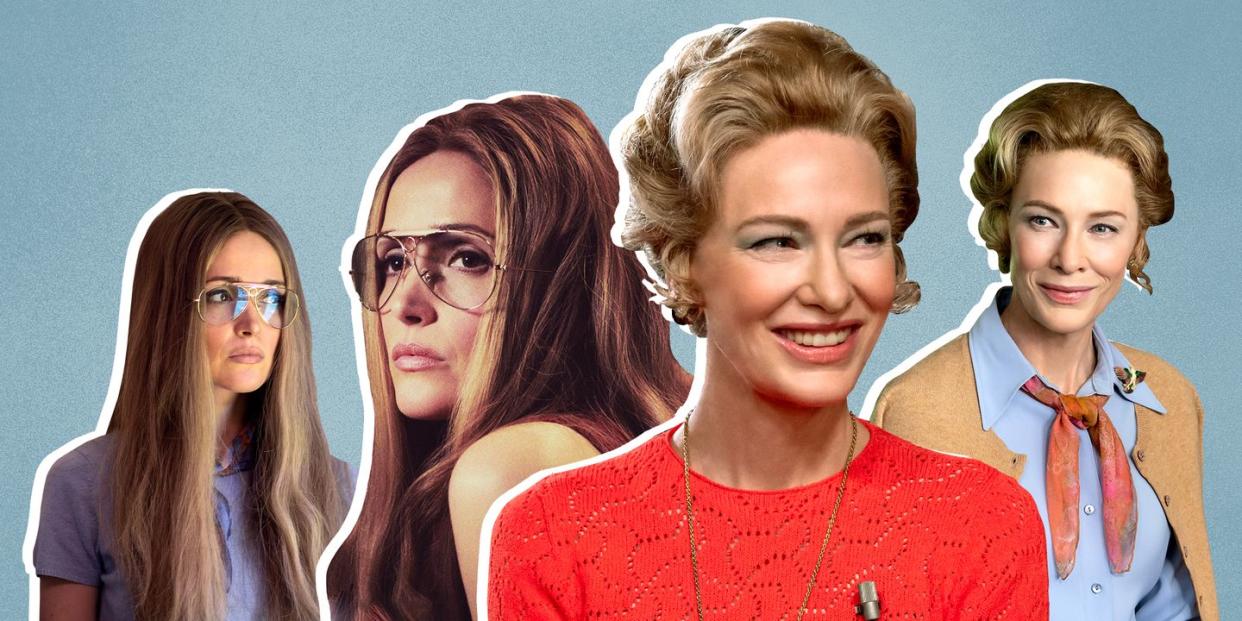
Mrs. America understands the importance of style. Not in a capital-F fashion sense—it's a show about the fight for the ERA, not a tour through designer collections past—but in a more democratic one.
It's a distinction the show's subjects understood well. "I can remember an article distinguishing between style and fashion—we said fashion is what other people want you to look like and what the designers put out there, what the color is for the year," Gloria Steinem told Teen Vogue in 2011. "Style is your own personal unique expression."
In the nine-episode miniseries, we see Steinem (Rose Byrne) surreptitiously get her highlights done. We see Alice (Sarah Paulson) and Pamela (Kayli Carter) apply their candy-bright lipstick and nervously adjust their clothing in a bathroom full of decidedly immodest feminists, readying themselves behind enemy lines. We see Betty Friedan (Tracy Ullman) debate what to wear for a date, and Phyllis Schlafly (Cate Blanchett) swipe eyeshadow on like warpaint.
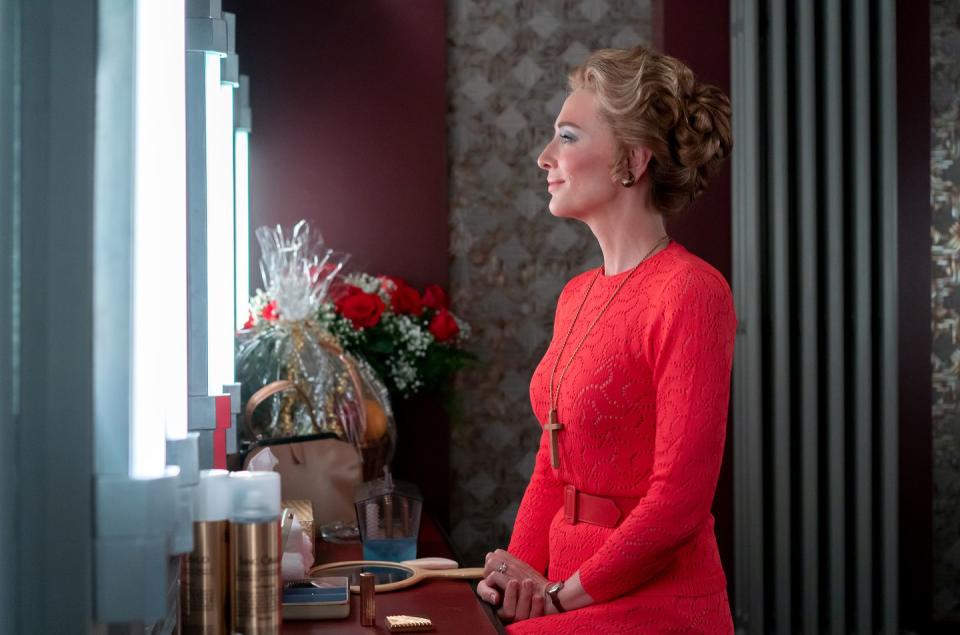
Not all of the women that appear in the series are consciously crafting an appearance, and even those who do aren’t working at it all the time. As the series’ costume designer, Bina Daigeler, pointed out to Town & Country, they had more important things to think about. “It was not an important thing to get dressed,” she explained, pointing to their wardrobes during the 1972 Democratic convention. “You know, you can follow it. The convention went for four days, it's nearly the same outfit they're wearing.”
But that doesn’t mean they weren’t sending signals. Style exists at the intersection of the individual and the larger culture, allowing the individual to fashion themselves into the image they wish to present. And for better or worse, women have traditionally had a lot more options than men when it comes to clothing—there is no standard-issue, gray suit equivalent for women, or any other oppressed gender identity—so their choices mean something. It’s a burden, and a tool.
“I think in a way it's actually more respectful to take it seriously, and in fact not at all feminist to discount it as unimportant,” Rhonda Garelick, author of the forthcoming Pink Politics, told Town & Country. “Because that is to say that the attention and care and labor and art of millions of women is not important.” And that is what Mrs. America gets.
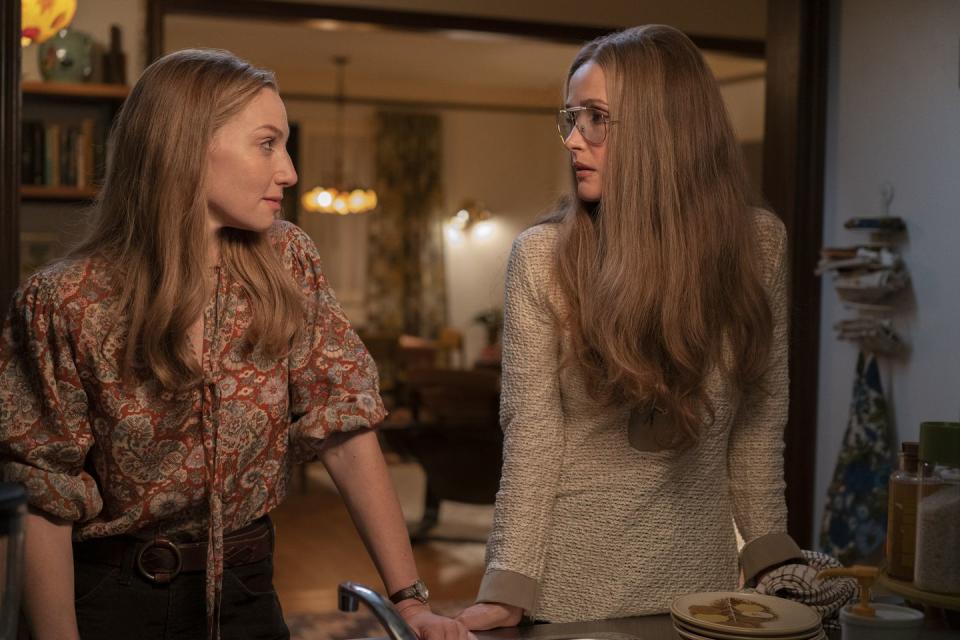
It places its characters in beauty parlors not to detract from their scenes in the halls of Congress, but to acknowledge these women's reality, and honor the work they put into their appearance. In the series, the battle over the ERA is a battle between women, with two sides positing different models for how women should be: which cultural values to uphold, how to exist in relation to men, even how to live (though the feminists would argue they didn’t much care about that last one, as long as everyone had a choice). Their self-styling isn’t just about signaling allegiance to one side or the other; it’s part of the ground they’re fighting on.
Absent the other, neither look—the conservatives' well-tailored skirt sets or the liberals' flowing patchwork dresses—means all that much. But when rubbed against each other, a potential energy is released. "They need each other to get their power in a way," says Emma McClendon, curator of the recent "Power Mode: The Force of Fashion" at the Museum at FIT. "You're choosing these symbols to react against something... They're opposing vocabularies but in a very close mirror image of each other."
Each side swathed themselves in the image of the future they wished to create, willing it into being through self-presentation. For Phyllis Schlafly and her well-coiffed citizen militia, the uniform consisted of plaid button-ups, carefully-draped cardigans, and floral prints sculpted into postwar silhouettes. The feminists, on the other hand, were privy to jeans, groovily patterned dresses, and T-shirts, and generally show a lot more willingness to experiment. (“I had much more fun with all the feminists,” Daigeler admitted.)
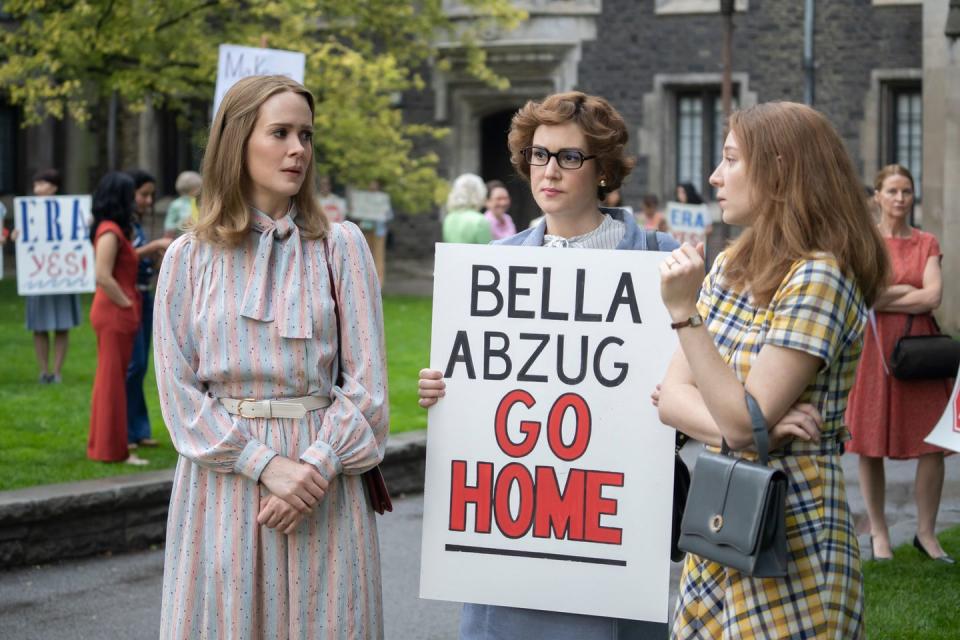
The Stop ERA contingent's styles are more straightforward, in a way, since they're drawing on an already established image, pushing for a return to a past (white, conservative) ideal in fashion just as in their politics. "At the beginning of the show, all the women around Phyllis, they are a little bit stuck in the '50s and '60s," Daigeler said. Her one creative flourish was to substitute more modern fabrics for the stiff ones women at that time actually wore—a subtle way to bridge the past and present. "We still are not where we would like to be with equal rights," she explained. "I didn't want it to look like it was the past: no, it is actually contemporary."
Meanwhile, the feminists were trying to create their own future, re-envisioning clothing as they re-envisioned the constructs around labor and gender and family. It was incumbent on them to come up with something new, for both the masses marching in the streets and the growing contingent of progressive elected officials.
With casual wear, the difference couldn’t be starker between the pants-wearing liberals and the pearl-clutching traditionalists. The leftists embraced elements of the counterculture, wearing T-shirts and jeans—objects that get their power by elevating what was once dismissed. "[The T-shirt] was a very kind of low status every day garment and sort of a throwaway garment that then became the sort of blank canvas to literally emblazon with your ideology," McClendon explained. "Jeans, too. Jeans were working class garments... And they really became became a symbol of resistance power."
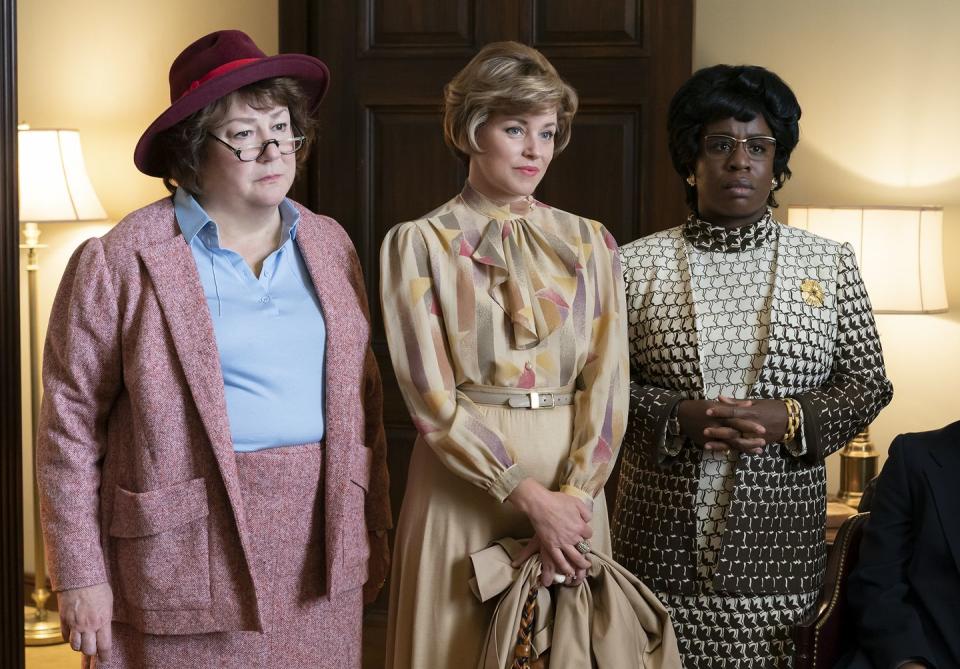
In the halls of the Capitol, this played out in a more muted form, as Bella Abzug and her ilk did what they could with the limited (largely blazer and skirt-based) options available to women at the time. Before the rise of the pantsuit—when women would adopt the uniform of the white male elite, at once co-opting and reifying the patriarchy’s power—they found creative ways to iconize themselves, signaling to both their revolutionary supporters and their Congressional colleagues that they were a force to be reckoned with.
Largely, their clothing fell in line with what conservative women wore at the time: skirts and blouses and sensible heels. The small differences, well-articulated in Mrs. America, come with the styling. Schlafly could slice a leftist's picket sign with her sharpened pleats; Bella Abzug (Margo Martindale) lets her genially crumpled blazers hang askew.
Of course, not everyone could afford to present themselves with a less than prim appearance. Shirley Chisholm, for example—brilliantly portrayed by Uzo Aduba in the show—bears the dual burden of being a woman and a black person in Congress. Her clothing is well-fitted and stylish, her earrings gold and gleaming, because they have to be. She doesn't have the leeway to look anything but polished—or to brush off Eurocentric beauty standards.
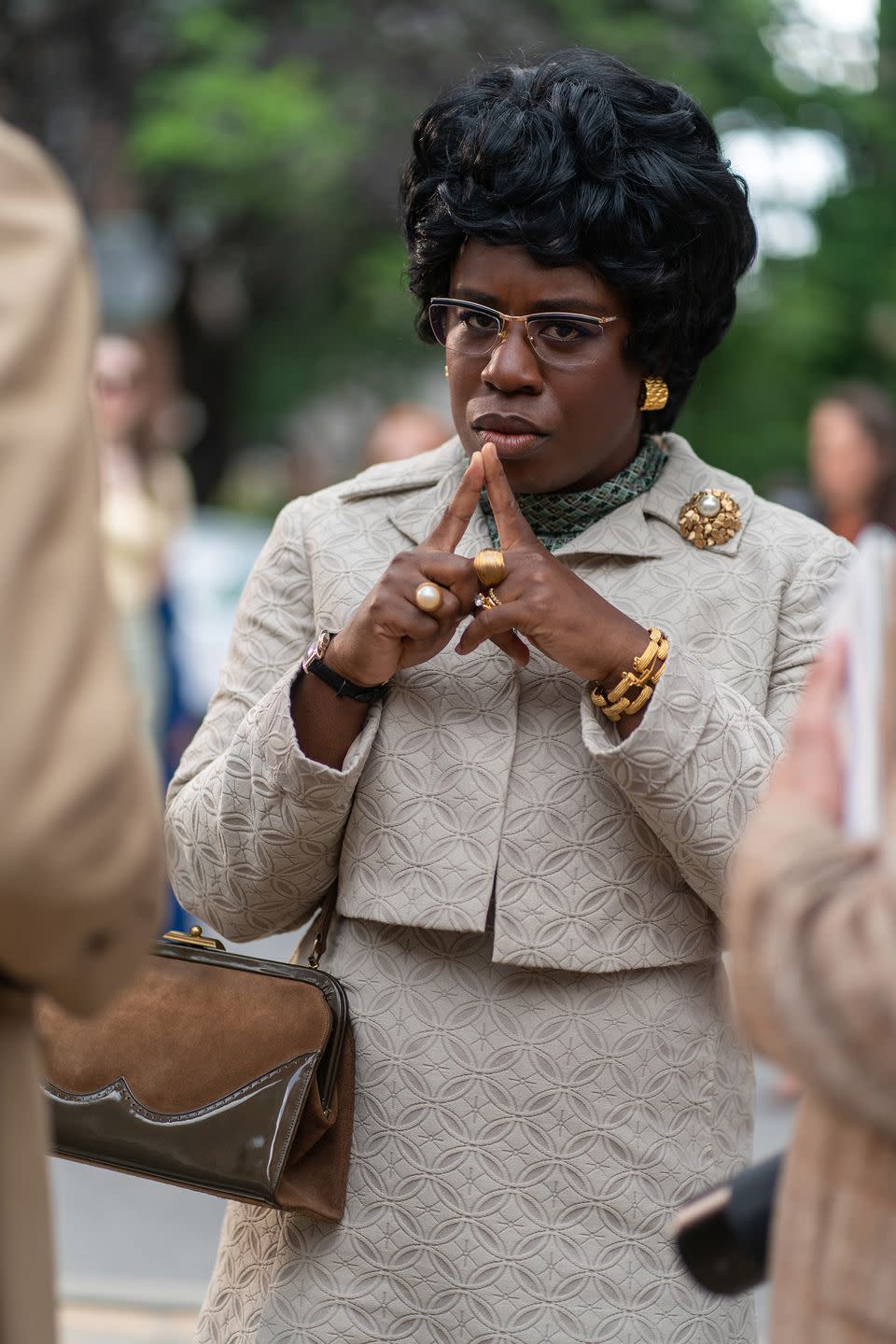
"The world was not ready for Shirley Chisholm to wear an Afro," Aduba told Town & Country, explaining how her smooth, sculpted wig embodied a larger tension in Chisholm's self-presentation. "It's big enough for it to be an Afro, but it's smooth enough to be tolerated... I do think that her hair was political. You know, I think it was to sort of live between both worlds, hopefully, of acceptance between the political world where she had to go work and be elected, but also her constituents who were rocking natural hair and it was loud and it was proud and it was big." (The series also features characters like Florynce "Flo" Kennedy (Niecy Nash) and Margaret Sloan (Bria Henderson), who can and do rock natural hair and wear peasant tops, though they could've used a little more screen time.)
Chisholm's wig served another purpose, too: iconicity. Her hair and glasses, worn over a period of years, made her instantly recognizable and easily remembered. Gloria Steinem, with her aviators and center part, Bella Abzug, with her myriad hats, and Phyllis Schlafly, with her meticulously styled up-do, did the same. It's a brilliant strategy, and one that's still being used today, notes Garelick (see: Elizabeth Warren's bright cardigan paired black slacks, a savvy signature look that walks the line between professionalism and relatability). "Very few people ever achieve that," adds Garelick. "But when it works, it is phenomenally powerful."
If fashion is an art, these women are its virtuosos—and Mrs. America knows it.
You Might Also Like

